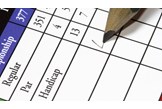Changes to the handicap system
Published: Last updated:
There are certain topics that generate impassioned debate among golfers like no other. Slow play is one. Tiger Woods is another. But handicaps, perhaps more than any other subject, really get us going. When we posted on our Facebook page the news that CONGU and England Golf had agreed changes to the handicap system that would see the maximum men’s handicap increase from 28 to 36, the responses came in their hundreds. The thought that competitions would be won with scores of 20-under or 50-plus stableford points had many of you extremely alarmed.
Here’s a breakdown of the most significant changes that will come into effect from January 1, 2016, and what we make of them…
The maximum men’s handicap increases from 28 to 36
A new ‘club handicap’ will be introduced for clubs who wish to allocate a handicap higher than 28 for use in club events. This handicap will only be valid at the player’s home club, not in opens and the like.
Pros: Enables beginners who can’t break 100 to have a handicap and play in comps.
Cons: Lower handicappers will be aghast at the idea that someone off 36 could come in with an outrageous score in a competition. Having one handicap at your home club and another when you’re on the road seems odd.
If you’re struggling, your handicap will increase more quickly
A new process will flag players with seven consecutive 0.1 handicap increases so the handicap committee can review and apply an immediate further handicap increase if necessary.
Pros: Good for older golfers whose performance is deteriorating faster than a series of 0.1 increases can keep up with.
Cons: A bad run of form could see your handicap increase beyond what is realistic for your ability. Potential for unscrupulous golfers to play seven poor rounds deliberately, receive a handicap increase and then win a competition.
Nine-hole rounds will count as qualifying scores
You will no longer need to play 18 holes to submit a qualifying score. To maintain an active ‘competition’ handicap, you will still need to complete 54 holes in a year, but these can be made up of nine-hole rounds if necessary. A score within or better than the buffer zone will have 18 points added to create an 18-hole score, while a score outside the buffer zone will be doubled to give an 18-hole total.
Pros: Enables those who are short of time to maintain an active ‘competition’ handicap.
Cons: No significant ones we can see, though all amateurs know that the front nine can be a totally different story to the back, so a nine-hole score may not be as representative of your form and ability.
Higher handicappers will influence the CSS
The Competition Scratch Score (CSS) is calculated by the average scores in the competition, to give an indication of how easy or difficult the course was playing on the day. Currently, only scores from category 1-3 golfers (handicaps up to 20.4) are considered, but this will extend to include Category 4 golfers from next year.
Pros: If you’re going to calculate how hard the course was based on scores, why not use as many scores as possible?
Cons: Higher handicappers are more likely to score significantly above or below their handicap than low handicappers, based on form on the day more than course conditions.

